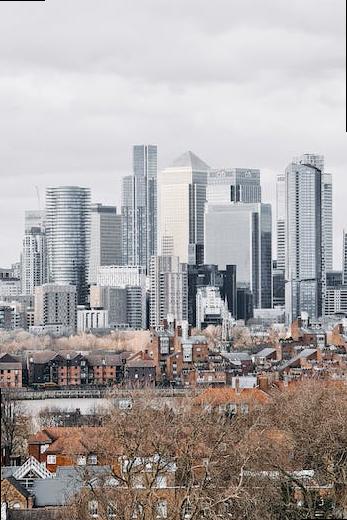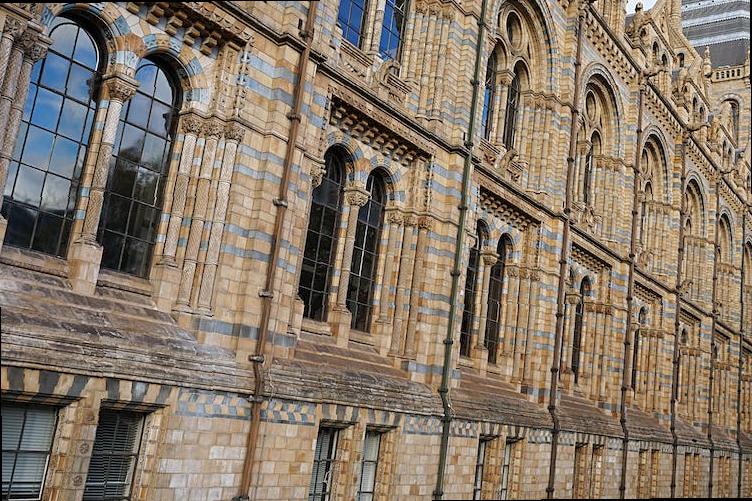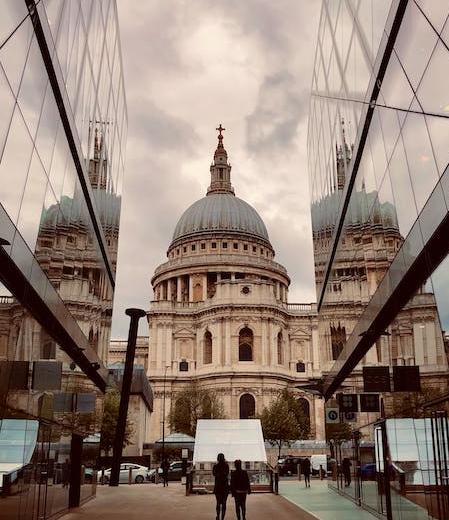London during the Industrial Revolution is a fascinating topic to explore as it marked a significant period of transformation for the city. Prior to this era, London was a smaller city and primarily known for its shipping and trading industries. However, as the Industrial Revolution took hold, London transformed into a major manufacturing hub, attracting large numbers of people to the city looking for work.
The Industrial Revolution began in the late 18th century and continued into the mid-19th century, and its impact on London was profound. Previously, many goods were produced by hand and tools, but the advent of new machinery revolutionized manufacturing processes. London saw the development of new factories and mills, which belched smoke into the sky and provided jobs for thousands of people.
The growth of London during the Industrial Revolution led to significant changes in the city’s landscape. New roads, bridges, and canals were built to facilitate the transportation of goods, and new housing was constructed to accommodate the influx of workers. The working conditions in the factories were often grueling, with long hours and minimal pay, leading to protests and strikes by the workers.

In conclusion, understanding the impact of the Industrial Revolution on London is crucial to understanding the growth and development of the city. The period marked a significant transformation in the city’s history and laid the groundwork for its status as a major global metropolis today.
London Before Industrial Revolution
London before the Industrial Revolution was a thriving city, but it was significantly different from the London that we know today. The city began as a small Roman settlement in AD 43, and over time, it grew into a major urban center. By the early medieval period, London had become a key trading center and an important hub for international commerce. However, much of the city was still made up of small, winding streets and narrow alleyways, with homes made of wood and plaster.
As London expanded, its population grew rapidly, and this led to a number of social, economic, and political changes. By the 17th and 18th centuries, the city was the seat of political power, and it was also a hub for scientific and intellectual activity. However, despite its growing influence, London was still plagued by poverty, disease, and crime.
Throughout the centuries, London’s infrastructure also developed, with the construction of docks, canals, and roads. This infrastructure helped to facilitate trade and commerce, and it was essential to the city’s growth. By the 19th century, London was the largest city in the world, and it was a hub of industrial activity.
Overall, London before the Industrial Revolution was a dynamic and growing city that played a crucial role in the development of trade, commerce, and politics in Europe. Despite the many challenges it faced, it continued to grow and evolve, laying the foundation for the modern metropolis that we know today.
Changes Brought By Industrial Revolution
The Industrial Revolution brought significant changes to London during the 18th and 19th centuries. With the advent of new technologies, such as the steam engine, production and manufacturing increased dramatically. This led to the growth of factories, which in turn attracted workers from rural areas to the city.
As the population of London grew rapidly, new infrastructure was needed to support it. Roads, railroads, and canals were built, and new forms of transportation, such as trains and omnibuses, were introduced. The city also underwent significant urbanization, with many old buildings being torn down to make way for new developments.

Some of the negative consequences of the Industrial Revolution in London included poor living conditions for workers, pollution, and increased crime. However, the changes brought about by the Industrial Revolution also brought about positive changes, such as increased economic growth and a rise in social mobility.
Astronomy involves studying celestial objects, such as stars and planets, and their movements in relation to the Earth; for example, the latitude of London compared to us impacts how we view certain constellations.
Emergence Of Factories In London
The emergence of factories in London began during the Industrial Revolution in the late 18th century. The city’s geographic location and access to waterways made it an ideal economic center for manufacturing. Textile mills were widely established in the city, with the first factory being built in Shoreditch in 1585. The demand for faster production led to more factories being developed over time. The Iron industry developed rapidly during the 1820s, and London became the hub of the iron trade, facilitating the growth of other related industries. New factories were established mainly around the docks, and the concentration of industries in the region led to the growth of the labor force in London.

Industry owners employed a large number of workers who were typically unskilled laborers and paid them very low wages, fueling social unrest. This led to the rise of unions and protests by the laborers, causing changes in labor laws. To navigate the London tube system, it’s important to understand the zones and fares – check out our guide on how to get London tube tickets.
Development Of Transportation Infrastructure
The development of transportation infrastructure in London has played a crucial role in shaping the city’s growth and economic success over the years. In the year 1800, London had limited means of transportation, with most people relying on horse-drawn carriages or walking. However, the construction of railways in the mid-1800s transformed London’s transportation system, improving connectivity and enabling faster and more efficient movement of goods and people.

The completion of the London Underground in 1863 further revolutionized transportation in London by providing a much-needed solution to the city’s traffic congestion. The construction of new roads, bridges, and highways also played a vital role in the expansion of the city’s transportation infrastructure.
The growth of London’s transportation infrastructure has led to numerous economic benefits. It has facilitated the movement of goods and people, contributing to the growth of trade and commerce. Increased accessibility has also led to the expansion of residential and commercial areas, boosting property values and creating job opportunities.
Today, London is one of the most connected cities globally, with an extensive transportation network consisting of buses, trains, trams, and taxis. The city’s commitment to investing in modern transportation infrastructure has not only improved the quality of life for its residents but also attracted businesses and visitors from all over the world.
Improvements In Communication Systems
Improvements in communication systems have revolutionized the way people interact and share ideas. London, like many other urban centers, has benefited significantly from technological advancements in the communication sector, particularly the internet, mobile technologies, and social media platforms.

The emergence of high-speed internet services and mobile technologies such as smartphones have made communication faster, reliable, and more convenient. People can now interact in real-time, share ideas, and collaborate with team members regardless of their geographical location. This has led to enhanced productivity and better communication in London’s business and social circles.
Social media platforms such as Facebook, Twitter, Instagram, and LinkedIn have become integral tools for communication in London. Individuals and businesses can now easily connect and share information with friends, family, and customers through social media platforms.
In addition, communication systems have improved the emergency response capabilities of London’s authorities. Emergency responders can now use digital communication tools to coordinate their response efforts and improve response times.
In conclusion, improvements in communication systems have had a significant impact on London’s business and social circles, emergency response capabilities, and overall quality of life.
Working Conditions In London
London has a long history dating back to Roman times. It grew over time and became a major economic and political center in the world. London’s working conditions have evolved since the city’s establishment. The city went through various phases, including being an agricultural center, an industrial hub, and a financial powerhouse. The Industrial Revolution saw the city develop numerous factories, which dramatically altered the working conditions. Labor laws were implemented to improve working conditions, along with the rise of labor unions.
Today, London’s workplaces are generally modern and well-equipped. Many businesses offer employees perks like flexible schedules, wellness programs, and career development opportunities. However, as with any city, there are still some challenges such as commuting, high competition for jobs, and the cost of living.
If you want to fit into London’s eclectic fashion scene, learning how to dress for London is a must. London is known for its fashion, with its residents often expressing their individuality through their clothing choices. How one dresses can heavily influence the impressions they make in the workplace, both on clients and colleagues.
Overall, London has a rich history and some exciting opportunities for workers. While there is still room for improvement, the city’s working conditions continue to evolve alongside technological advancements and societal shifts.
Impact Of Industrial Revolution On London’S Economy
The Industrial Revolution had a significant impact on London’s economy. Prior to the revolution, London’s economy was primarily based on trade and commerce. However, with the advent of new technologies and manufacturing processes, London became a hub for manufacturing industries. These industries included textiles, steel, and chemicals, among others.
London’s population grew rapidly during the Industrial Revolution, reflecting the increased demand for workers in the manufacturing industries. This led to a significant increase in the demand for housing and other infrastructure, which in turn created new employment opportunities in the construction and transportation sectors.
The new manufacturing industries also led to an increase in international trade, with London becoming a major center of trade and commerce. The city’s ports and warehouses became critical to the movement of goods to and from Britain’s colonies and other trading partners.
Overall, the impact of the Industrial Revolution on London’s economy was significant. The city’s economy transformed from a primarily commercial one to a manufacturing and trade-based one. The explosion in population, driven by new employment opportunities, led to increased demand for housing and infrastructure. The growth of international trade further accelerated London’s economic development, making it one of the most important centers of commerce in the world.
Struggle For Workers’ Rights
The struggle for workers’ rights in London started in the 19th century due to poor working conditions and low wages for workers in various industries. Workers often had to work long hours in hazardous environments, which resulted in health problems and accidents. They were also paid meager wages and had limited access to basic necessities such as healthcare and education. This led to the rise of trade unions that fought for workers’ rights, better working conditions, and higher wages. The early unions faced significant opposition from employers and the government, leading to protests, strikes, and even violence.
Over time, the unions gained more influence, and laws were introduced to protect workers’ rights. These included the minimum wage, maximum working hours, and health and safety regulations. Today, workers in London enjoy better working conditions, higher wages, and access to social services. However, there is still room for improvement, particularly in the gig economy, where workers often lack job security and employment benefits.
To get London Grand Rank, it is crucial to focus on developing effective game sense and decision-making skills.
London’S Role In The Global Industrialization.
London played a crucial role in the global industrialization. During the 18th and 19th centuries, London witnessed a significant transformation in its economy and infrastructure. This transformation was mainly due to the increasing demand for goods and services, which led to the establishment of factories, mills, and other industrial infrastructures in and around the city. In addition, the growing population and booming economy led to the development of new transport systems, such as canals, railways, and ports which facilitated the exchange of goods and raw materials. Furthermore, the rise of the British Empire allowed London to become a global financial center, attracting investments and businesses from all over the world.
There may be more job opportunities in London or Paris – is London or Paris better to live? This is subjective and depends on an individual’s preferences. London offers a fast-paced and diverse urban lifestyle, with a variety of cultural and entertainment options. However, living in London can be expensive, and the city’s fast-paced lifestyle can be overwhelming for some. On the other hand, Paris offers a slower pace of life, with an emphasis on culture and gastronomy. The city is also known for its beautiful architecture and monuments. However, the job market in Paris may not be as diverse as in London, and the cost of living can also be high. Ultimately, the decision between London or Paris depends on an individual’s priorities and preferences.
Final point
In conclusion, the origins of London date back to the Roman conquest of Britain in 43 AD. The Romans established a small settlement on the north bank of the River Thames, which would eventually evolve into the city we know today. Over the centuries, London grew and developed, becoming a hub of trade, industry, and culture. By the Middle Ages, it was one of the largest and most important cities in Europe. Despite suffering devastating events such as the Great Fire of 1666 and the Blitz during World War II, London has continued to thrive, and remains one of the world’s leading cities.
The early history of London is closely tied to its location on the River Thames. Initially, Roman London was a small trading post, established to facilitate commerce between the Roman Empire and the local tribes. However, the city grew rapidly, attracting merchants and traders from all over the world. By the 12th century, London had become an important center of trade and finance, with markets, guilds, and a thriving port.
Throughout the Middle Ages, London continued to grow and expand. The city’s walls were extended to keep pace with its growth, and new buildings were constructed, including Westminster Abbey and the Tower of London. London also became an important center of culture and learning, with universities, theaters, and museums attracting scholars and artists from all over Europe.
By the 17th century, London had become one of the wealthiest and most powerful cities in the world. The 18th and 19th centuries saw the city undergo major changes, with the construction of new buildings, streets, and railways, and the expansion of its population. Despite being heavily bombed during World War II, London continued to thrive, and remains an important economic, cultural, and political center to this day.
